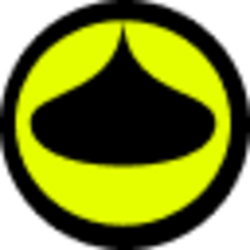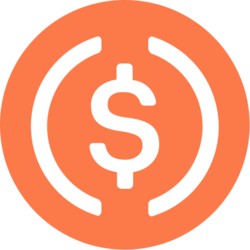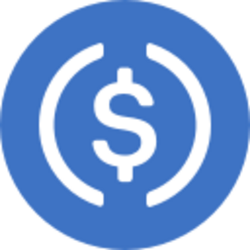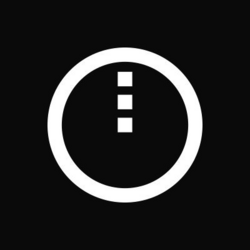Pope Leo XIV, the first American leader of the Catholic Church, previously known as Robert Francis Prevost, returned to the Sistine Chapel the day after his choice to pronounce a Mass for the Cardinal College, where he described his role as a cross to carry and a blessing and urged the church leaders to become “small”.
Key data
Leo XIV, the polyglot born in the United States that spent a large part of his career in Peru, spoke briefly in English on Friday morning against a cardinal audience before pronouncing the rest of his homily in Italian.
“Through the Ministry of Pedro, you have called me to take that cross and to be blessed with that mission,” said Leo XIV in English, addressing the cardinals who chose him, whom he urged to “walk with me while we continue as a church, as a community of friends of Jesus.”
In Italian, Leo XIV pronounced a homily that suggested some of his priorities as a pontiff, in which he warned against “practical atheism”, regretting that Jesus is sometimes “reduced to a kind of charismatic leader or superman” and that “there are many environments in which Christian faith is considered absurd, destined for the weak and little intelligent,” according to a translation of the Vatican.
Leo XIV criticized the prioritization of “technology, money, success, power or pleasure” above faith and said there are environments in which “missionary work is desperately needed” to reach “common people”, echoing their decades of work as a missionary abroad.
The new Pope praised his predecessor, Francisco, from whom Leo XIV said: “He taught us so many times that we are called to testify to our joyful faith in Jesus El Salvador.”
He urged the cardinals to become “small” and said that “all those who exercise a ministry of authority in the Church” should “be set aside so that Christ remains.”
What is on the agenda of Pope Leo XIV in his early days as Pope?
In his first weekend as Pope, Leo XIV will meet with Cardinals on Saturday and will make his first public appearance on Sunday to pray Regina Caeli from the Basilica of San Pedro, according to a program published by the Vatican. On Monday, Leo XIV will meet with members of the international press and on Friday, May 16, with members of the Vatican diplomatic corps. The inaugural Mass of Leo XIV will be held on May 18 in the Plaza de San Pedro at 10:00 a.m., the Vatican time, and will hold its first general hearing on May 21.
What were Leo XIV’s first words as Pope?
Peace be with you! Dear brothers and sisters, this was the first greeting of the risen Christ, the good shepherd who gave his life for the flock of God. I also want this peace of peace to enter their hearts, to reach their families and all people, wherever they are; Already all peoples, and the whole earth: La Paz is with you, according to a translation of the discourse of Leo XIV from the Vatican.
What we know about Pope Leo XIV
Leo XIV, 69, was born in Chicago and recently served as a prefect of Dicastery for Bishops and president of the Pontifical Commission for Latin America under the papacy of his predecessor, Pope Francis. He was appointed Cardinal by Francisco, and Vatican experts have affirmed that he values the defense that Francisco makes of the poor. However, he has received criticism for his management of priests accused of sexual abuse.
What has Trump said about Pope Leo XIV?
President Donald Trump said about the National Team, publishing his congratulations to Leo XIV in Truth Social, and added: “It is a great honor to know that he is the first American Pope. What emotion and what great honor for our country! I hope to meet Pope Leo XIV. It will be a very significant moment! Speaking to the press on Thursday, Trump said he was “a little surprised, but very happy” that the Pope is American, and added that he hopes to meet Pope Leo XIV and that the Vatican has already contacted him.
How have other US leaders reacted?
Vice President JD Vance He congratulated Leo XIV in an X publication, saying: «I am sure that millions of American Catholics and other Christians will pray for their successful work at the head of the Church. God bless you!
President Joe Biden He also sent good wishes, saying in X: «May God bless Pope Leo XIV of Illinois. Jill and I congratulate him and wish him much success ».
Former President Barack Obama y will express Dama Michelle Obama They said in X that they sent “congratulations to a compatriot of Chicago” and added: “This is a historic day for the United States and we will pray for him while the sacred work of leading the Catholic Church begins and setting so many, regardless of his faith.”
The Secretary of State, Marco Rubio, He declared about the appointment of Leo XIV as Pope: “This is a moment of deep significance for the Catholic Church, which offers renewed hope and continuity in the middle of the jubilee year of 2025 to more than one billion faithful worldwide … the United States hopes to deepen its lasting relationship with the Holy See with the first American pontiff.”
How did they announce when a Pope had been chosen?
After voting, the ballots were burned and chemicals were added to produce black smoke (which indicated that no potato had been chosen) or white smoke (which meant that a Pope had been chosen) of the Sistine Chapel. Vatican’s observers gathered to see what color the smoke was after each vote. Prevost received the majority of two thirds of the votes necessary to be chosen Pope on Thursday afternoon, which probably happened in the fourth vote, after two failed ballets on Thursday morning and a failed vote on Wednesday. The bells sounded while the white smoke left the Sistine Chapel, where thousands of people gathered in the Plaza de San Pedro and chanted: “Long live the Pope!” Cardinal Dominique Mamberti announced Prevost, who took the papal name of Leo XIV, as Pope on the balcony of the Basilica of San Pedro on Thursday night, approximately one hour after the white smoke from the Sistine Chapel came out.
Who were the main candidates to be elected Pope?
There was no clear favorite to win the papacy, Vatican experts said, although some of the cardinals who considered themselves main candidates included Italian Pietro Parolin, the Secretary of State of the Vatican who is considered more moderate than Francisco, and the Philippine Luis Antonio Gokim Tagle, who is compared to Francisco for his liberal tendency postures and his defense of the poor. Parolin and Tagle were the two main contestants in several bets, including Polymarket and Kalshi, since the traigators bet millions in the papal election. Other cardinals who considered possible candidates included several of Italy (Pierbattista Pizzaballa and Matteo Zuppi), as well as the Congolese Fridolin Ambongo, to the Hungarian Peter Erdo, the Ghanaés Peter Turkson and the Frenchman Jean-Marc Aveline.
Why was this conclave important?
Papal experts said that the conclave could determine if the Catholic Church continues along the path drawn by Francisco to become more progressive, or if a more conservative successor could be chosen and potentially reversing some of Francisco’s reforms. Francisco was remarkable and divisive for his positions that adopted a more cozy tone towards LGBTQ+ Catholics and women in leadership roles in the church, which won some world praise but angered conservative critics. Cardinal Anders Arborelius of Sweden said that some cardinals wanted to choose a successor “that he can follow Francisco’s footsteps. Others said: ‘No, no. At all,” said The New York Times, while the Italian conservative cardinal Camillo Ruini said there was a “need to return the church to Catholics”. The dean of the Cardenalicio College, Giovanni Battista Re, said in a homily on Wednesday that the new Pope would face a “difficult and complex turning point in history,” affirming that he prayed for a Pope who leads “for the good of the Church and humanity.”
Read more: Leo XIV, Pope tennis player: ‘I consider me an amateur’
How did the conclave work?
Away from the outside world, cardinals under 80 years of age cast four votes every day until a candidate obtained a two -thirds majority. The process began on Wednesday afternoon with Mass in the Basilica of San Pedro, after which the cardinals were heading to the Sistine Chapel to begin the conclave. The days when successor was not chosen, the cardinals spent the night in the guest houses of the Vatican to resume the vote the next day. Each cardinal was assigned a desktop with papers that said: “Eligo in Summum Pontificem” (“I choose as Supreme Pontiff”).
Surprising data
Some cardinals saw the movie “Conclave”, the papal drama who won an Oscar just two months ago, while preparing for reality, Politico reported, citing a cleric involved in the conclave that said that some cardinals found the movie “remarkably precise.” The “Conclave” audience shot 283% one day after Francisco’s death, according to Luminate.
Why did the first day of the conclave lasted so long?
Wednesday’s vote lasted more than expected by most experts, since the first smoke column took an hour more than the first black smoke column in 2013 during the conclave that chose Pope Francis. Mathew Schmalz, editor of the Journal of Global Catholicism and Professor of Religious Studies of College of The Holy Cross, told BBC News that the long wait for the first column of smoke could be due to the large number of cardinals around the world who met for the first time, speculating that the conclave could last a day more than usual. Although it is not clear why the vote on Wednesday took so long, Schmalz declared to the BBC that it is “somewhat nervous” in case the conclave could have had problems that must be solved in the next few days. The 133 -voter conclave is the greatest and most global diversity in history, greater than the 115 voters who participated in the conclaves of 2005 and 2013, which could also cause a longer vote duration.
Key history
Francisco died at age 88 on Easter Monday, April 21, after a series of health problems that led him to his longest hospitalization as Pope. Francisco was hospitalized earlier this year due to bilateral pneumonia and bronchitis, and Vatican’s doctors reported that he died of a stroke and irreversible heart failure.
This article was originally published by Forbes Us.
You may be interested: tweets attributed to Robert Francis Prevost, the new Pope, criticize Trump














































